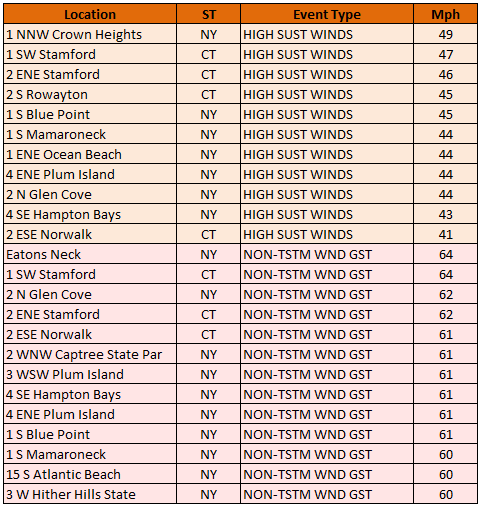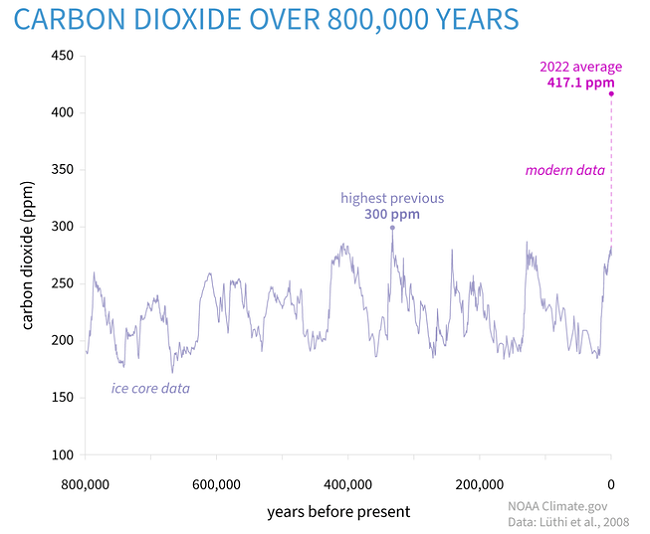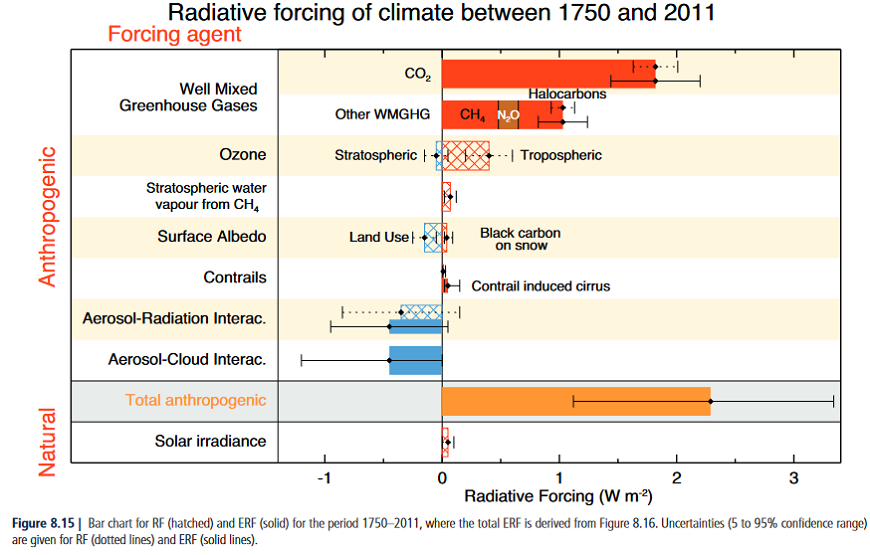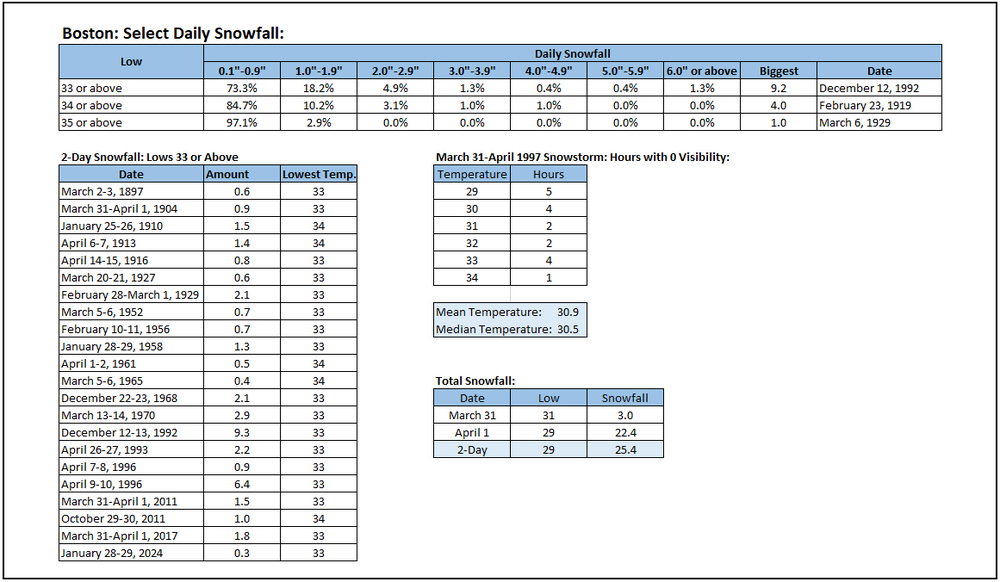-
Posts
22,985 -
Joined
Content Type
Profiles
Blogs
Forums
American Weather
Media Demo
Store
Gallery
Everything posted by donsutherland1
-
No. Earthquakes are not part of atmospheric science, so anything related to earthquakes would be an elective course.
-
You can find it here.
-
For those tracking historic earthquakes in the NYC area: So far, there have been six minor aftershocks. Four were magnitude 2.0 or above. The strongest was magnitude 2.2.
-
Four aftershocks ranging from 1.8 to 2.2, so far.
-
So far, there has been one aftershock (2.0).
-
The quake was felt from Virginia to New Brunswick (Canada, not NJ).
-

April 2024 Disco- SNE’s favorite month
donsutherland1 replied to HoarfrostHubb's topic in New England
For perspective: Last daily snowfall of 4.8" or above in NYC: January 30, 2022 Last earthquake of 4.8 or above: April 5, 2024 -
My sister in Milford, PA in the Delaware River Valley felt it.
-
Very noticeable shaking in Larchmont and audible rumbling.
-
A snowstorm is raging in parts of northern New England. Snowfall amounts include: Bangor: 8.1" (old record: 6.0", 2007) Burlington: 8.8" (old record: 2.7", 2004) Concord: 6.7" Portland: 6.4" (tied record set in 1915) Worcester: 5.5" Following the damaging storm that brought sustained winds as high as 49 mph to the New York City area, sunshine returned and the temperature rose into the 50s. The next few days will feature readings in the 50s. After a cool first week of April, it will likely turn noticeably warmer during the second week of the month. New York City's Central Park remains on track to finish the 2023-2024 snow season with less than 10" of seasonal snowfall for a record second consecutive season. Records go back to 1869. The ENSO Region 1+2 anomaly was -0.4°C and the Region 3.4 anomaly was +1.0°C for the week centered around March 27. For the past six weeks, the ENSO Region 1+2 anomaly has averaged +0.42°C and the ENSO Region 3.4 anomaly has averaged +1.27°C. The ongoing basinwide El Niño event is fading. Neutral conditions could develop later in the spring. The SOI was -12.19 today. The preliminary Arctic Oscillation (AO) was +0.161 today.
-
1 NNW Crown Heights in Brooklyn had sustained winds of 49 mph yesterday. Numerous locations reported sustained winds of 40 mph or above in the New York City area and suburbs.
-

Occasional Thoughts on Climate Change
donsutherland1 replied to donsutherland1's topic in Climate Change
No one denies the progress that has been made. But the progress isn't proof that the warming climate is a good thing. Life expectancy gains have increased from a combination of medical breakthroughs, mass warning for severe weather events, etc. Early warning made possible by advances in meteorology and technology for rapid mass dissemination of messages (radio, TV, wireless devices, etc.) have dramatically reduced the incidence of deaths from natural disasters. Electricity has made life better, but that doesn't mean that society must remain irrevocably committed to producing electricity from the burning of fossil fuels and flooding of the atmosphere with CO2. Rapid scaling of existing technology (solar, wind, nuclear, etc.) can begin to dramatically reduce the burning of fossil fuels in the energy sector (not overnight, but on a decadal scale). -

Occasional Thoughts on Climate Change
donsutherland1 replied to donsutherland1's topic in Climate Change
Climate change has played a role throughout the paleo record in driving or contributing to extinctions and reduction in biodiversity. Warmer climates have resulted in higher sea levels, levels that would require abandonment of major coastal megalopolises if they are again reached. Those two bad outcomes. Whether climate change is a cycle (past events) or anthropogenic (current event) is irrelevant. Being cyclical or non-anthropogenic doesn't mean that an outcome is "not bad." The outcomes determine whether it is "bad." Certainly, for the life that suffers or goes extinct, it is "bad." For the new life that emerges, it's arguably a "good" outcome. From the human perspective, as noted above regarding rising sea levels that could culminate in loss of the coastal plain and low-lying islands around the world, it is not good. Although there is no "correct" temperature, theoretically the "correct" temperature range on a habitable planet is the range at which life can exist unaided. So far, some extremophiles have been found at temperatures ranging from near -20C (-4F) to 50C (122F). Complex life requires a narrower range. Technology has expanded the range at which humans can survive, but if biodiversity falls below a threshold or large-scale extinction occurs dramatically reducing food options, the human population would suffer a precipitous and rapid decline. Setting this aside, modern humans evolved during the Holocene. The Holocene temperature range might be the ideal one for humans. On the current trajectory, the world would likely warm 0.3C - 0.5C (0.5F - 0.9F) by 2040. If recent work by James Hansen is correct, the warming would be greater. Either way, the global temperature is on track to reach Pliocene-level temperatures by 2040. Those temperatures are outside the modern human experience. In terms of catastrophic events, it depends on how you define "catastrophic." Summer 2022 saw an estimated 70,000 persons succumb from heat in Europe. Somalia saw 43,000 drought-related deaths, half of which were children, in 2023. Climate change made that drought an estimated 100 times more likely. Summer 2023 provides an example of an unprecedented event for the period of record (1896-present) in Phoenix. July had an average temperature of 102.7F (old monthly mark for any month: 99.1) and there was a 31-consecutive-day stretch (June 30-July 30) of 110F or above high temperatures (old record: 18 days). No American city had ever experienced such a hot month over a monthly period (Death Valley is not a city). That heat was linked to climate change in an attribution study. The climates of the geological past e.g., Paleocene-Eocene Thermal Maximum (PETM) were hotter and more extreme. But CO2 was much higher then, than it is now. Thus, "unprecedented" isn't the best way to examine contemporary anthropogenic climate change. One needs context. One is witnessing unprecedented events over the existing period of record and very likely the warmest temperatures throughout the entire Holocene. -

Occasional Thoughts on Climate Change
donsutherland1 replied to donsutherland1's topic in Climate Change
More and more areas that have been ravaged by fires or floods are also being abandoned outright by insurers. This process is still in its early stages. In a decade or two, the lack of insurance coverage could decimate property values in some of the exposed areas. Worse, given federal deficits and Congressional dysfunction, it is unlikely that the federal government would launch a program where it would become the buyer of last resort. Climate change has real and growing costs. -
Rain and wind will continue into tomorrow with temperatures mainly in the 40s. A storm total 1"-3" rainfall with locally higher amounts is verifying across the region. Coastal flooding at times of high tide is likely. Central and upstate New York and central and northern New England could see accumulating snow, especially in higher elevations and away from the coastline. After a cool first week of April, it will likely turn noticeably warmer during the second week of the month. It is very likely that New York City's Central Park will finish the 2023-2024 snow season with less than 10" of seasonal snowfall for a record second consecutive season. Records go back to 1869. The ENSO Region 1+2 anomaly was -0.4°C and the Region 3.4 anomaly was +1.0°C for the week centered around March 20. For the past six weeks, the ENSO Region 1+2 anomaly has averaged +0.42°C and the ENSO Region 3.4 anomaly has averaged +1.27°C. The ongoing basinwide El Niño event is fading. Neutral conditions could develop later in the spring. The SOI was -11.47 today. The preliminary Arctic Oscillation (AO) was -0.368 today.
-
-
Thunder and lightning in the Bronx.
-

Occasional Thoughts on Climate Change
donsutherland1 replied to donsutherland1's topic in Climate Change
During the far more elevated CO2 regimes, the Earth was a much warmer place than it is today. It was also a place that was far outside the experience of humans. Moreover, past spikes in CO2, often from massive ongoing volcanic activity, led to catastrophic outcomes for most species. The contemporary world is not in a situation similar to when those mass extinctions took place. But it is on a firm trajectory toward the mid-Pliocene Warm Period of 3-4 million years ago. If anything, the political leaders gathered at COP 28 essentially ratified that trajectory in failing to come up with even the earliest caps on CO2 emissions. The world could enter the early stages of this new climate regime by around 2040 on its present path. The world of the mid-Pliocene would be dramatically different from the one in which modern human society evolved. It could result in dramatic and rapid societal simplification, due to food supply-consumption gaps, loss of coastal megacities from 10+ meters of sea level rise (this goes beyond 2100), societal disruptions from aridification, poleward migration of tropical-borne diseases, new viral pathways as migrating specifies come into contact, etc. Once mid-Pliocene conditions set in, there would be the risk that the warmth would be sufficient to trigger the release methane that is currently locked away under the oceans and in permafrost. It's uncertain what temperature threshold would be required to trigger that outcome, but the risk would be far higher than it is today, even with today's warm climate. Even with societal simplification, the world would go on. Arguably, some of the current pressures on biodiversity could be alleviated. But that would be a very bad outcome for human society even if biodiversity begins to heal. That outcome is still an avoidable one and a matter of choice. -

Occasional Thoughts on Climate Change
donsutherland1 replied to donsutherland1's topic in Climate Change
Clauser's claims are deeply flawed. Moreover, he fails to even attempt to provide a coherent and credible alternative explanation to the observed warming that climate science links to anthropogenic greenhouse gas emissions. Clauser: "I can very confidently assert, there is NO climate emergency." Fact: Relative to geological time, the modern increase in atmospheric CO2 is extreme. As, an emergency is a "serious...and often dangerous situation requiring immediate action," climate change fits the definition. Even if the worst of the danger still lies in the future, immediate action could avert the worst consequences. Clauser: "...atmospheric CO2 and methane have negligible effect on the climate." Fact: The Greenhouse Effect has been understood since the 19th century. Methane is a far more powerful greenhouse gas than Carbon Dioxide. Both promote warming by reducing outgoing longwave radiation in relation to incoming shortwave radiation from the sun. This energy imbalance warms the planet. The increases in anthropogenic Carbon Dioxide and Methane explain virtually all of the warming that has occurred since 1750. Clauser: "The policies government have been implementing are total unnecessary and should be eliminated. " Fact: With burning of fossil fuels contributing to most of the increase in atmospheric greenhouse gases, the claim that the modest policies aimed at reducing greenhouse gas emissions is "total(sic) unnecessary" is baseless. A much stronger case can be made that the policies that fall far short of achieving net zero emissions by 2050 lack necessary ambition. Clauser: "So far, [we] have totally misidentified what is the dominant process in controlling the climate, and all of the various models are based on incomplete and incorrect physics." Fact: The models, for all their imperfections, have shown remarkable skill in correctly forecasting the observed warming. Hausfather et al., 2019 observed, "...most models examined showed warming consistent with observations, particularly when mismatches between projected and observationally informed estimates of forcing were taken into account." Clauser: "The dominant process, is “the cloud-sunlight-reflexivity thermostat mechanism. Clouds are all bright white, and they reflected 90% of the sunlight back into space making them the most crucial yet most overlooked aspect of the climate system." Fact: There is some evidence that the cooling effect of clouds is understated in existing climate models. However, there is also evidence that increased CO2 leads to cloud changes that decrease their cooling effect (fewer lower- and middle-level clouds, more high clouds). This cloud behavior resulted in increased climate sensitivity at higher levels of CO2, particularly during the Paleocene–Eocene Thermal Maximum (PETM). NASA has observed a recent increase in polar stratospheric clouds, particularly over the Arctic. Overall, the emerging consensus is that cloud feedbacks will enhance, not reduce the warming driven by rising greenhouse gases. -
With 2.41” of rain in the past hour, Atlanta has broken the records for highest hourly rainfall in April (old record: 1.39”) and the Spring (old record: 2.36”). Daily rainfall of 2.50” through 12 am EDT surpassed the old mark for April 2 of 2.25” from 1975.
-
Tomorrow through Thursday will see periods of moderate to heavy rain with highs in the 40s. A storm total 1"-3" rainfall with locally higher amounts is likely through Thursday. Coastal flooding at times of high tide is likely. Central and upstate New York and central and northern New England could see accumulating snow, especially in higher elevations and away from the coastline. After a cool first week of April, it will likely turn noticeably warmer during the second week of the month. It is very likely that New York City's Central Park will finish the 2023-2024 snow season with less than 10" of seasonal snowfall for a record second consecutive season. Records go back to 1869. The ENSO Region 1+2 anomaly was -0.4°C and the Region 3.4 anomaly was +1.0°C for the week centered around March 20. For the past six weeks, the ENSO Region 1+2 anomaly has averaged +0.42°C and the ENSO Region 3.4 anomaly has averaged +1.27°C. The ongoing basinwide El Niño event is fading. Neutral conditions could develop later in the spring. The SOI was -10.53 on April 1. The preliminary Arctic Oscillation (AO) was -0.970 today.
-
Tomorrow through Thursday will see additional rainfall with highs in the 40s. A general 1"-3" rainfall with locally higher amounts is likely through Thursday. Coastal flooding at times of high tide is likely. Central and upstate New York and central and northern New England could see accumulating snow, especially in higher elevations and away from the coastline. After a cool first week of April, it will likely turn noticeably warmer during the second week. It is very likely that New York City's Central Park will finish the 2023-2024 snow season with less than 10" of seasonal snowfall for a record second consecutive season. Records go back to 1869. The ENSO Region 1+2 anomaly was -0.4°C and the Region 3.4 anomaly was +1.0°C for the week centered around March 20. For the past six weeks, the ENSO Region 1+2 anomaly has averaged +0.42°C and the ENSO Region 3.4 anomaly has averaged +1.27°C. The ongoing basinwide El Niño event is fading. Neutral conditions could develop later in the spring. The SOI was -10.53 today. The preliminary Arctic Oscillation (AO) was -1.192 today.
-

Significant Miller B Nor'easter watch, Apr 3rd-4th
donsutherland1 replied to Typhoon Tip's topic in New England
Both the 12z GGEM and GFS show a significant snowfall (6"+) across most of southern New England, including the Greater Boston area. The 0z GGEM had shown March 31-April 1997-type amounts for Boston. More likely significant snowfall will be confined to interior sections, as well as higher elevations rather than the Greater Boston area, as readings in Boston are forecast to remain above freezing on both the GFS and GGEM. A somewhat colder air mass would change things. Here's how Boston has fared for the 225 days during which measurable snow was reported and the low temperature was 33° or above. The highest 1-day totals were: 33°F or above: 9.2", December 12, 1992 34°F or above: 4.0", February 23, 1919 The highest 2-day totals were: 33°F or above: 9.3", December 12-13, 1992 34°F or above: 4.0", February 23, 1919 A significant portion of the March 31-April 1997 snowstorm occurred with temperatures at or below freezing. -

Occasional Thoughts on Climate Change
donsutherland1 replied to donsutherland1's topic in Climate Change
Unfortunately, the film lacks scientific merit. It makes numerous claims that run counter to scientific understanding ranging from the basics of the greenhouse effect (which has been understood since the 19th century) to warming being an artifact of the urban heat island (UHI effect--UHI is real, but rural locations have been warming, too). The impact of adding greenhouse gases to the Earth System is a matter of physics, not politics. The Earth Energy Imbalance that has resulted is driving warming, as incoming solar radiation exceeds outgoing longwave radiation. The geological record provides further illustrations of the role CO2 has played in amplifying the warming, even as past triggers for increasing atmospheric CO2 were natural. It makes no difference whether CO2 is released through volcanic activity or from the burning of fossil fuels. The effects are the same given the well-understood properties of the gas. There remain some questions about whether sensitivity to increasing CO2 also ramps up at some point. Recent research suggests that it does on account of a decrease in low- and medium-level cloud cover at the mid- and high-latitudes, allowing more incoming solar radiation to reach the surface than would otherwise be the case. Not surprisingly, summing up the body of research, science journalist Peter Brannen observed, "...our current experiment--quickly injecting huge amounts of carbon dioxide into the atmosphere--has in fact been run many times before in the geological past, and it never ends well." The warming is just one problem. Most of the CO2 is absorbed by the oceans leading to acidification. The combination of acidification and warming reduces oxygen (even as sea life needs more oxygen to deal with warmer temperatures), which can create food chain die-offs. Recent bleaching events of corals off Florida and Australia are early symptoms of what could become a much bigger problem if the issue is not addressed in a sufficient and timely matter. And what happens in the sea doesn't stay in the sea. A substantial loss of sea life would be felt by human society. There would be no quick fixes. In the end, the film trivializes what is a major issue with profound consequences. It seeks to delay societal action by injecting disinformation into the public sphere. The costs of a delayed response could be magnitudes of order greater than those associated with earlier efforts to address the problem.











